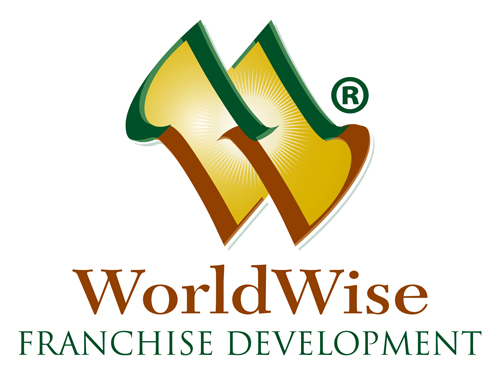Auto and Collision Repair Franchises Struggle with Labor Shortage
BY TOM KAISER

With a backdrop of booming auto sales and a hot U.S. economy, the auto and collision repair industries are facing an unprecedented confluence of factors that are transforming the industry for single-location mom-and-pop shops, multi-store operators and franchisors alike.
After a banner 2014, multiple outlets are forecasting that the 2015 Seasonally Adjusted Annual Rate (SAAR) could reach 17 million in 2015 — that’s one brand-new car for every 18.5 Americans. Sales numbers this healthy haven’t been seen since the twin peaks of 2000 and 2005.
At the same time, vehicles have become much more technologically advanced, which translates to greater complexity and training requirements for auto repair and collision repair shops. See the newly aluminum-bodied Ford F-150 pickup—the most popular vehicle in the country—and the growing roster of techno flagships like the all-electric Tesla Model S sports car.
With a persistent image problem (think “grease monkey”) and a greater focus on four-year colleges rather than technical or vocational schools, auto repair and collision repair franchises are being impacted by a widespread shortage of technicians, leading to upward pressure on wages, benefits and other perks.
For a look at the greater impacts to these two industries, we spoke with David James, CEO of Kansas-based CARSTAR Auto Body Repair Experts, and Rissy Sutherland, COO at Arizona-based Honest-1 Auto Care.
Franchise Times: What are the primary factors tightening the labor market for technicians?
 David Byers: Everyone in the industry has been talking about the lack of human resources is the biggest single issue that our industry is facing today and has been for several years. Number one, there are not as many young people going into training for our industry as there had been historically. That creates a dearth of talent at the younger stage of the pool. The second thing is exacerbated by the first point, because there are fewer technicians in the market, there’s a lot more competitive activity to keep or switch them to different auto body shops, so I think the combo of those two factors has put a lot of pressure on the collision repair industry
David Byers: Everyone in the industry has been talking about the lack of human resources is the biggest single issue that our industry is facing today and has been for several years. Number one, there are not as many young people going into training for our industry as there had been historically. That creates a dearth of talent at the younger stage of the pool. The second thing is exacerbated by the first point, because there are fewer technicians in the market, there’s a lot more competitive activity to keep or switch them to different auto body shops, so I think the combo of those two factors has put a lot of pressure on the collision repair industry.jpeg) Rissy Sutherland: It is becoming unbelievably tight. You have everything from people being willing to make offers to technicians that they’ve never made—benefits, sign-on bonuses … people stealing techs from each other, bringing in green people and trying to train them from the ground up. It is a market like we have never seen before. If we don’t start turning [this] around today, there will be the most severe shortage that anybody has ever seen. If we don’t do something about it now, it could mean customers have to wait days for repairs and pricing going up because there’s not enough people out there to fix cars when they’re broken down.
Rissy Sutherland: It is becoming unbelievably tight. You have everything from people being willing to make offers to technicians that they’ve never made—benefits, sign-on bonuses … people stealing techs from each other, bringing in green people and trying to train them from the ground up. It is a market like we have never seen before. If we don’t start turning [this] around today, there will be the most severe shortage that anybody has ever seen. If we don’t do something about it now, it could mean customers have to wait days for repairs and pricing going up because there’s not enough people out there to fix cars when they’re broken down.
.jpeg) Rissy Sutherland: It is becoming unbelievably tight. You have everything from people being willing to make offers to technicians that they’ve never made—benefits, sign-on bonuses … people stealing techs from each other, bringing in green people and trying to train them from the ground up. It is a market like we have never seen before. If we don’t start turning [this] around today, there will be the most severe shortage that anybody has ever seen. If we don’t do something about it now, it could mean customers have to wait days for repairs and pricing going up because there’s not enough people out there to fix cars when they’re broken down.
Rissy Sutherland: It is becoming unbelievably tight. You have everything from people being willing to make offers to technicians that they’ve never made—benefits, sign-on bonuses … people stealing techs from each other, bringing in green people and trying to train them from the ground up. It is a market like we have never seen before. If we don’t start turning [this] around today, there will be the most severe shortage that anybody has ever seen. If we don’t do something about it now, it could mean customers have to wait days for repairs and pricing going up because there’s not enough people out there to fix cars when they’re broken down.FT: How big of a factor is retirement of existing techs?
DB: Certainly, we have an overall aging of the entire workforce within the collision repair industry. The data I’ve seen … indicates the average age is increasing and that’s because you’re not seeing young people coming into the industry. We’re not only seeing retirements within technician, but also in the collision repair industry as owners of these businesses are reaching their 50s and 60s
FT: Is the technician shortage impacting wages or other benefits?
DB: I would say maybe to a small degree. The entire collision repair industry has had to be so careful about managing our expenses, because there has been so much margin pressure from the insurance carriers. We’re not getting paid more to do the work. We’d all like to pay all of our employees more, [but] we really do not have the flexibility to do that as much as we’d like.
RS: Absolutely. As people become more competitive and skill levels become more valuable, then of course their economic value … becomes higher and higher. What they’re able to look for and ask for is very different [than it was] 10 or 15 years ago. A modern car is a computer on wheels, so they have to have a lot of investment into their schooling, training, toolboxes, their continued growth and personal development.
FT: How can individual shop owners/managers improve their own local labor situation?
DB: One of the things that our owners have been pretty good about is working with local trade organizations and trade technical institutes to encourage those centers of learning to provide opportunities within the collision repair space. We at a national level will continue to do that, although, frankly, it’s probably at this point still done best at a local level because it’s difficult to graduate someone from a trade school in Michigan and then recruit them for a job in Texas.
FT: How can your industry work together on this issue?
RS: There are a lot of us who are trying to come together. There are quite a few [industry organizations] that are trying to start up. If we have to divide our forces in too many of those orgs, it’s going to dilute the impact. If we can keep it to one to two big organizations where we can come together one to two times a year … to change our government, school systems, economy, our country in general … that’s going to be the best way to do it.
FT: How has the increasing complexity of modern cars impacted your business?
DB: We have to buy additional equipment. Preparing for aluminum repairs can range from $50,000 to $150,000 for a shop, so that is increasing our cost structure, and we’re also have to retrain or get our people certified against additional complexity. That’s additional training cost that we didn’t have before due to the complexity and additional processes that are involved with just aluminum repair, not to mention active suspensions and new lighting systems.


